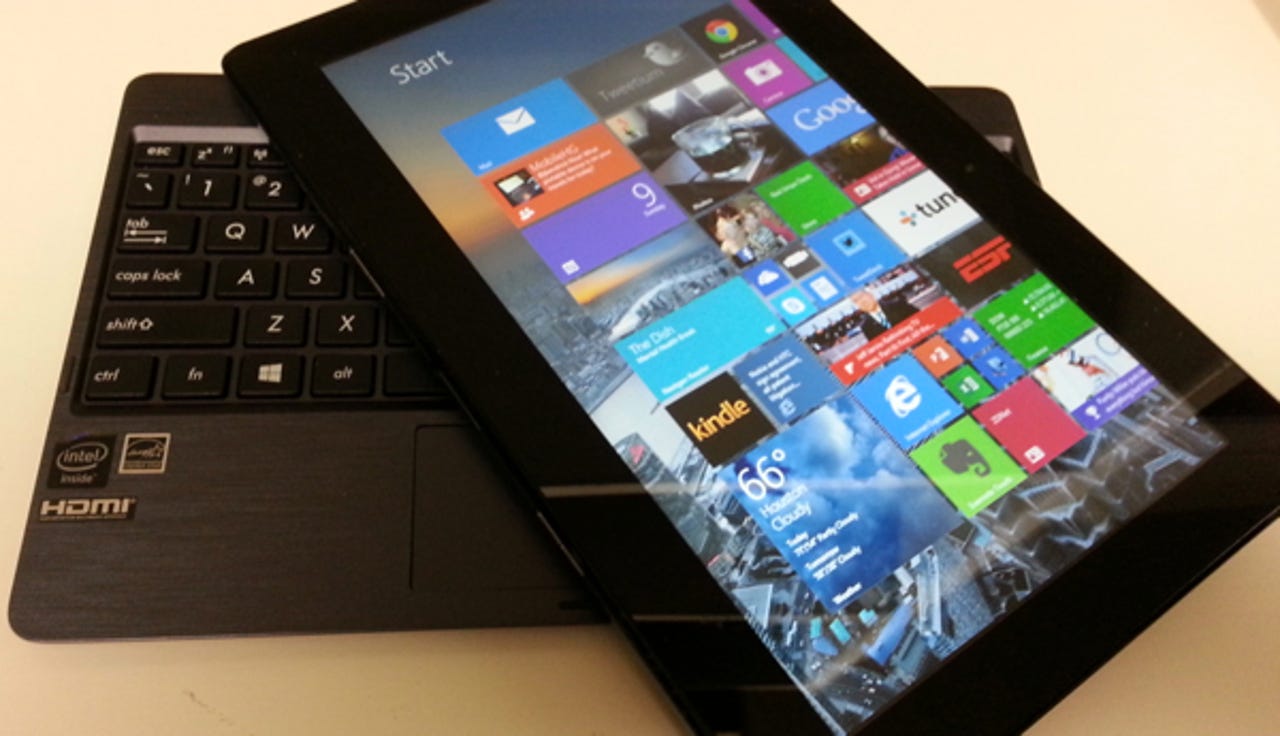IT Departments: Deploy Windows hybrids for employee buy-in

The Metro/Modern interface, the Start screen in particular, is something you either love or hate. Ask folks why they haven't upgraded to Windows 8.1 from Windows 7 or earlier and many will tell you they can't stand the interface.
That doesn't just apply to individual users, it's the situation the enterprise is confronting, too. Deploying the latest version of Windows when so many employees don't like it is a potential recipe for disaster.
That could be offset if corporate IT departments would look at deploying hybrids. Those are the devices in the familiar laptop form that can become tablets by pulling the screen off the laptop portion. As the ads are fond of saying, a hybrid is a laptop when you need one and a tablet when you want one.
Workers will be doing things they enjoy, and come to view using the Windows 8.1 hybrid as less of a work thing and more of a fun thing.
This is the perfect method to deal with employee resistance to the deployment of Windows 8.1. Workers are more likely to view the hybrid as a more personal device, as tablets are personal in nature. Deploying hybrids would be a good way to bridge work and personal, without sacrificing the utility the enterprise requires.
One benefit that IT departments might see is the reduction in the amount of training needed for the radically different operation of Windows 8.1 over what came before. Using the touch tablet will stimulate users to explore on their own, and that will lead to learning the new OS without supervision. Windows 8.1 is natural on a tablet and workers will pick up on that through personal use.
Discovering how good the Windows 8.1 tablet is for personal use should lead workers to realize that the tablet can also serve well for some work functions. That can only make them more productive than they otherwise would be.
To make this work it needs to be the IT policy to not only let employees use the device for personal stuff, it should encourage it. Employees with a corporate hybrid must be encouraged to take them home and use them for personal tasks. This may be a radical departure for companies that have always forbidden personal use of company laptops.
This dual usage can be handled like it is already being handled for smartphones. The hybrid can be provisioned to keep personal and business data walled off. This protects both company and personal information, keeping both parties comfortable.
Featured
I predict that companies who embrace this methodology and deploy hybrids to workers will get an overwhelmingly positive result. Employees may grumble about Windows 8.1 at first, but I believe they will come around quickly once they see how good it is at running personal tablets.
They will be doing things they enjoy, and come to view using the Windows 8.1 hybrid as less of a work thing and more of a fun thing. That can only be good for the company, the IT department in particular.
I see this effect all the time when I speak with folks about Windows 8.1. Many have a knee-jerk reaction and tell me they hate Windows as it represents work to them. Then I hand them a Windows 8.1 tablet and watch them operate Metro by touch, and I often see a change come over them. They end up smiling and going all over the interface, tapping and swiping to their hearts' content.
This can and should come to the enterprise, if companies are willing to take a chance.
Additional coverage of hybrid devices:
- Deploying tablets in the workplace: Don't write off the pen
- Asus Transformer Book T100: One week in
- Asus Transformer Book T100: First impressions
- Asus Transformer T100 is calling my name
- HP Envy x2 revisited 45 days in
- HP Envy x2 quick take: Good laptop and great tablet
- HP Envy x2 for $525: I had to buy one at that price
